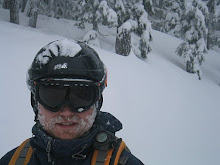June 26, 2009So, today the results were released. None of my scores placed, but they all received very good scores. For reference, my one entry last year score a lowly 21.
- Liquid Karma v2 - Specialty Ale (23) - 31
- Russian Lullaby - Belgian Strong Golden Ale (18D) - 33.5
- Bamboozled - Smoke Ale (22B) - 33.5
- Kinza Imperial Wit - Belgian Specialty (16E) - 30.3
- Hop 99 - Old Ale (19A) - 30
My goal was to at least place in the top 4 of the style category, but I just missed out with the Russian Lullaby place just out of honorable mention in the Belgian Strong category (I was most satisfied with this b/c of the effort put into that one and it involved some new techniques). Overall those are some great scores though and validates what I think of those beers and my overall brewing skills. The judges' feedback received was very valuable and I can't wait until next year!!
The overall results......my buddy Colin's brew "
From Belgium, Wit Love" was selected to be brewed by Rock Bottom (Bellevue) and that was actually the brew I helped him back in May...Congrats Colin!!
Competition Summary:
300 Beers
10 States
13 beers selected to be professionally brewed!
BEST OF SHOW
1st Place: Steve Milnes's "Kolsch"
2nd Place: Mark Trent's "Valle de Oro" (Belgian Specialty Ale)
3rd Place: Mike & Steve Brown's "Caber Toss" (Strong Scotch Ale)
Honorable Mention: Jeff O'Neal's "The Kind" (Classic Rauchbier)
Pro-Am Qualified Selections:
Baron Brewing Company - Joel Pratt's "Goat Roper Scotch Ale", Strong Scotch Ale
Big Al Brewing - Mike & Steve Brown's "Caber Toss", Strong Scotch Ale, BREWED
Big Time Brewery and Alehouse - Ryan Hilliard's "Pale Ale", American Pale Ale
Diamond Knot Brewery - Eric Surface's "Vader-Ade", Schwartzbier
Elliott Bay Brewery - James Golovich's "American Barleywine 2007", American Barleywine, BREWED (selection made in 2008 PSPA)
Elysian Brewing Company - Mark Joy's "Pucker Puss", Wood Aged Beer, BREWED
Flyers Restaurant and Brewery - Mark Emiley's "Formico", Foreign Extra Sout
Issaquah Brewhouse - Nathan Zorich's "Rochefontaine's 9", Belgian Dark Strong
Ram Restaurant and Brewery (Lakewood) - Steve Milnes's "Golden Strong", Belgian Golden Strong, BREWED, Photos
Rock Bottom Brewery - Bellevue - Colin Lenfesty's "From Belgium, Wit Love", Witbier, BREWED
Rock Bottom Brewery - Seattle - Tim Hayner's "No Spit Wit", Witbier, release celebration August 6th
Snipes Mountain Brewing Company - Karl Vanevenhoven & Derry Jefferis's "American Pale Ale", American Pale Ale
"Recreational" Selections
Baron Brewing Company - Alison Sheafor-Joy's "Tangy Mole Brew", Spice, Herb, or Vegetable Beer
Powerhouse Restaurant and Brewery - Jim Brischke's "Fairly Common", California Common





















































